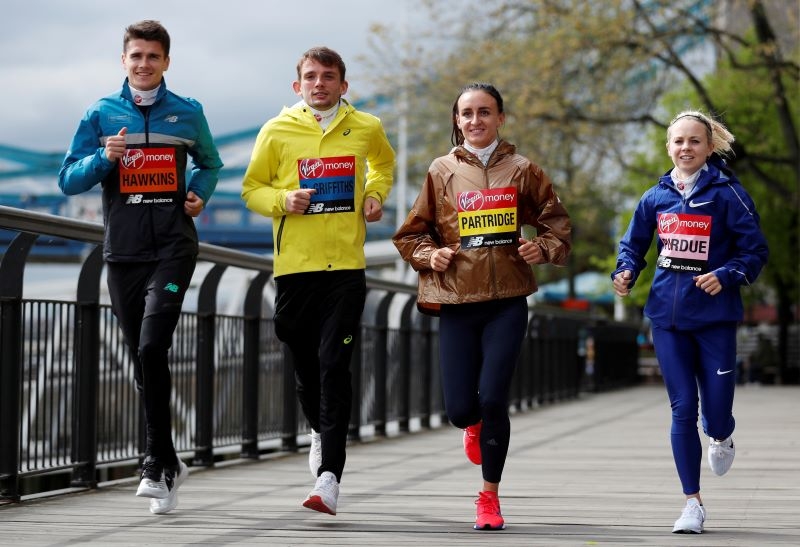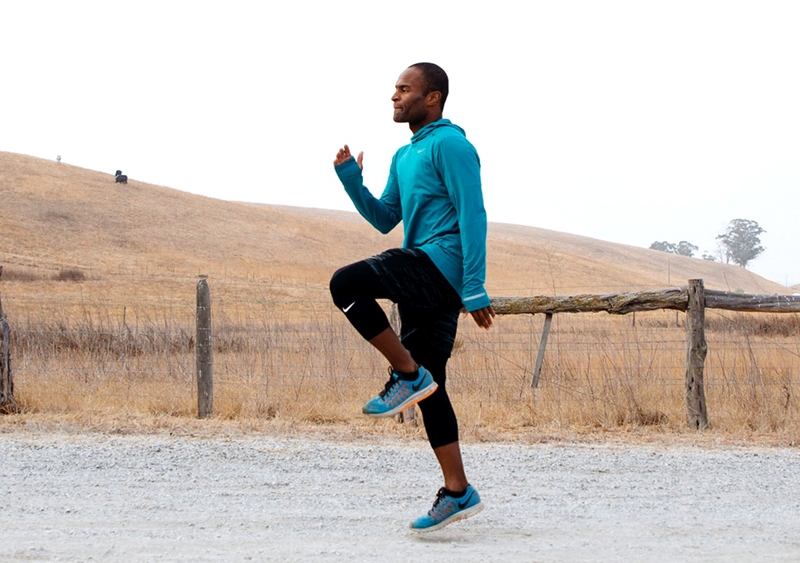You are viewing 1 of your 1 free articles. For unlimited access take a risk-free trial
Optimum stride length for runners? Your brain knows best!

Although it might not be something you’ve given a lot of thought to, it turns out that optimising stride length is quite a hot topic among many runners, and quite a few running coaches too. The theory is that by consciously adjusting stride length, runners can become more efficient at running, needing less oxygen to sustain a given running pace – or to put it another way, will be able to sustain a faster pace without becoming excessively fatigued. But just how true is this? Can the brain’s mechanism of control be improved upon? Is there any evidence that we enhance our running efficiency by subtly increasing or decreasing stride length? While this sounds plausible, the science to date says no.
The first part of this story began back in 2007, when researchers studied the optimal stride frequency and running economy (efficiency) in 16 trained runners during an intense 1-hour runEur J Appl Physiol. 2007 Aug;100(6):653-61. Note that stride frequency is inversely related to stride length – for any given speed, a higher steps per second frequency equates to a shorter stride length. What they found was that as the run progressed and fatigue set in, the stride length tended to become shorter. However, when they asked the runners to artificially increase or decrease their stride length at any point during the run, the runners always became less efficient. In other words, their naturally preferred stride length (selected by the brain) at any point in the run was always the most efficient.
The research
Some coaches have argued that while allowing the brain to determine optimum stride length is fine for experienced runners, inexperienced and novice runners could still need guidance, because their brains haven’t clocked up enough running miles to self determine optimum efficiency. But now a very recently published study blows this theory out of the water. The study, published in the International Journal of Exercise Science, measured the energy use of 33 runners while using various stride lengths during a 20-minute runInt J Exerc Sci. 2017 May 1;10(3):446-453. Of those runners, 19 were experienced runners (meaning they averaged at least 20 miles a week) while 14 were inexperienced runners (people who have never run more than 5 miles in a week). During their runs, participants used five different stride lengths: their natural stride, and then strides of plus and minus 8 and 16 percent of their normal stride length. The results showed both the experienced and the inexperienced runners were most efficient (used less oxygen, lower VO2 figures – see figure 1) when they were using their preferred stride as chosen by the brain. In a nutshell, you don’t need to alter your stride length when running economy is the main concern. As the lead researcher, Professor Hunter, put it: “Just let it [stride length] happen; it doesn’t need to be coached.”FIGURE 1: STRIDE LENGTH AND RUNNING ECONOMY

Implications for runners
This study shows convincingly that trying to consciously adjust your stride length in order to run more efficiently is not just a waste of time – it will more than likely decrease your running efficiency. Does this mean that there are never any circumstances when adjusting stride length can be advantageous? Not necessarily - that’s because some research shows that reducing stride length by 5% (and increasing speed to compensate) can significantly improve energy absorption and reduce shock by around 20% at the knee jointMed Sci Sports Exerc. 2011 Feb; 43(2): 296–302. Runners who are particularly vulnerable to or recovering from injury could in theory benefit from deliberately shortening stride length a little, at least on a temporary basis. However, this theory has never been properly clinically tested. And even if a shorter stride does help reduce injury risk, runners need to accept that their altered stride length will likely reduce their efficiency.PRACTICAL SUGGESTIONS
- Don’t try following a stride-length or stride-cadence training programme programme to increase your running efficiency. Regardless of your running speed, your brain will automatically determine your ideal stride length – ie there’s no need to think about this.
- The exception could be if you’re trying to recover from or avoid injury; while a little less efficient, there is some evidence that deliberately using a shorter stride length will reduce impact forces, which could lessen the chance of injury, especially to the knee.
- If developing running efficiency is your goal, there are better ways – for example the use of lower-body strength training as mentioned above.
Newsletter Sign Up
Testimonials
Dr. Alexandra Fandetti-Robin, Back & Body Chiropractic
Elspeth Cowell MSCh DpodM SRCh HCPC reg
William Hunter, Nuffield Health
Newsletter Sign Up
Coaches Testimonials
Dr. Alexandra Fandetti-Robin, Back & Body Chiropractic
Elspeth Cowell MSCh DpodM SRCh HCPC reg
William Hunter, Nuffield Health
Keep up with latest sports science research and apply it to maximize performance
Today you have the chance to join a group of athletes, and sports coaches/trainers who all have something special in common...
They use the latest research to improve performance for themselves and their clients - both athletes and sports teams - with help from global specialists in the fields of sports science, sports medicine and sports psychology.
They do this by reading Sports Performance Bulletin, an easy-to-digest but serious-minded journal dedicated to high performance sports. SPB offers a wealth of information and insight into the latest research, in an easily-accessible and understood format, along with a wealth of practical recommendations.
*includes 3 coaching manuals
Get Inspired
All the latest techniques and approaches
Sports Performance Bulletin helps dedicated endurance athletes improve their performance. Sense-checking the latest sports science research, and sourcing evidence and case studies to support findings, Sports Performance Bulletin turns proven insights into easily digestible practical advice. Supporting athletes, coaches and professionals who wish to ensure their guidance and programmes are kept right up to date and based on credible science.












